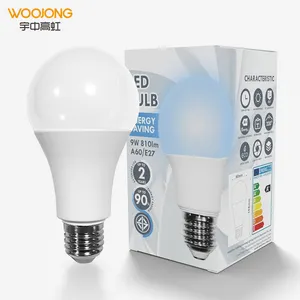Introduction to Lightbulb Fixtures
Lightbulb fixtures are essential components in the world of lighting that serve as the base for holding light sources while providing aesthetic appeal and functionality. These fixtures are designed to support various types of bulbs, play a significant role in illuminating spaces, and enhance the overall decor of a room. With various styles, designs, and materials available, lightbulb fixtures cater to different functional demands and aesthetic preferences, satisfying a wide range of consumer needs. Choosing the perfect lightbulb fixture can transform the ambiance of a space, offering both practicality and artistic expression.
Types of Lightbulb Fixtures
Lightbulb fixtures come in several types, each suited for specific applications and environments. Understanding these types can help you make an informed decision when selecting fixtures for your space.
- Ceiling Fixtures: These fixtures are mounted directly to the ceiling and provide general illumination. Examples include flush mounts and chandeliers, perfect for living rooms and dining areas.
- Wall Fixtures: Also known as sconces, wall fixtures are mounted on walls to provide ambient or task lighting, frequently used in hallways and bedrooms.
- Pendant Fixtures: Hanging from the ceiling by a rod or chain, pendant fixtures are stylish and can be used individually or in clusters, often found above kitchen islands or dining areas.
- Recessed Fixtures: Installed into the ceiling, recessed fixtures offer a sleek look and are commonly used in modern homes for overall lighting.
- Outdoor Fixtures: Designed for durability and weather resistance, outdoor lightbulb fixtures illuminate gardens, pathways, and patios, enhancing safety and aesthetics.
Function, Feature, and Design of Lightbulb Fixtures
Lightbulb fixtures not only serve the primary function of holding light sources but also integrate innovative features that enhance usability and design. Modern fixtures are available with various functionalities that can significantly benefit users.
- Versatility: Many lightbulb fixtures accommodate different types of bulbs such as LED, incandescent, or CFL, granting flexibility in energy usage and light quality.
- Energy Efficiency: With the advent of LED technology, many lightbulb fixtures now focus on maximizing energy savings while providing effective illumination.
- Aesthetic Appeal: Fixtures come in innumerable styles, colors, and designs, from vintage to contemporary, allowing consumers to choose options that best suit their interiors.
- Adjustability: Some lightbulb fixtures, particularly pendant and recessed types, offer adjustable heights and angles, allowing users to customize light direction.
- Smart Lighting Features: Many newer fixtures offer integration with smart home systems, allowing remote control and automation for enhanced convenience.
Safety and Quality in Lightbulb Fixtures
When investing in lightbulb fixtures, safety and quality are paramount. High-quality fixtures ensure longevity, durability, and peace of mind in any environment. Here are significant factors to consider:
- Material Quality: Choose fixtures made of durable materials like metal or high-quality polymers that can withstand wear and tear over time.
- Electrical Safety: Ensure that the fixtures adhere to electrical safety standards, minimizing the risk of short circuits or fires.
- Proper Installation: Accurate installation is crucial for safety. Consider hiring a professional electrician for complex setups, especially in recessed or outdoor fixtures.
- Heat Management: Look for fixtures designed to dissipate heat efficiently, which can prolong the lifespan of bulbs and prevent overheating.
- Warranty and Support: Quality lightbulb fixtures often come with warranties and customer support options, providing assurance of durability and service.























































